The Google Pixel 7 launch date is almost here, as Google is fully unveiling the phone - along with the Pixel 7 Pro - today, on October 6.
You can follow our Google Pixel 7 event live blog for all the last-minute rumors before the launch starts at 10am ET / 7am PT / 3pm BST / 1am AEDT, and for the full details once it gets going. But we already know loads about these handsets, thanks to teases from Google and extensive leaks.
Sadly, it's not all good news, as multiple leaks point to the handsets being near-doppelgangers of their Pixel 6 family equivalents, something which makes sense if you tuned into Google IO 2022 earlier in the year and saw the initial teases of the devices. That said, there is at least hope for some significant camera improvements.
With its early-October launch, the Pixel 7 is going to be one of the last major smartphone launches of 2022, following hot on the heels of the recently-announced iPhone 14 line.
This article will run you through everything you need to know about the Google Pixel 7 series, both things that are confirmed by the company and, after that, what leaks and rumors are pointing towards (although at this stage, there's little left to the imagination).
After that we have a wish list containing the main features and upgrades that we want the Pixel 7 (and Pixel 7 Pro) to offer, in order to make them the best phones possible.
We’ll also be updating this feature once the phones are officially launched with all the key details you might need - so keep this page bookmarked.
Google Pixel 7: cut to the chase
- What is it? The next Pixel flagship
- When is it out? October 6, 2022
- How much will it cost? Likely to start at $599 / £599 / AU$999
Google Pixel 7 release date and price
Google has already confirmed that we'll get a full announcement of the Pixel 7 line later today (October 6), so there's not long to wait now. You can follow the launch via our Google Pixel 7 event live blog, and stay tuned for more in-depth coverage soon after. We also have a guide to how to watch the Pixel 7 launch.
That date is no surprise either, as every previous model was unveiled in October of their release year, except the Google Pixel 5, which was announced on September 30 – so virtually October.
Following that announcement, the Pixel 7 Pro will go up for pre-order on the same day. It's likely that the standard Pixel 7 will too, but that's not been confirmed. As for when the phones will ship, one leak points to October 18, while another suggests October 13.
The latter is looking more likely, as an early Amazon listing shows October 13 too.
Moving on to the price, the same Amazon listing shows a price of $599 for the Pixel 7, which is the same starting price as the Pixel 6 had. Another price leak likewise suggests a starting price of $599 for the Google Pixel 7, and a price of $899 for the Google Pixel 7 Pro, which similarly is identical to the starting price of the Pixel 6 Pro.
That could mean identical prices in other regions too, in which case we'll be looking at £599 / AU$999 for the Pixel 7 and £849 / AU$1,299 for the Pixel 7 Pro.
Confirmed Google Pixel 7 facts
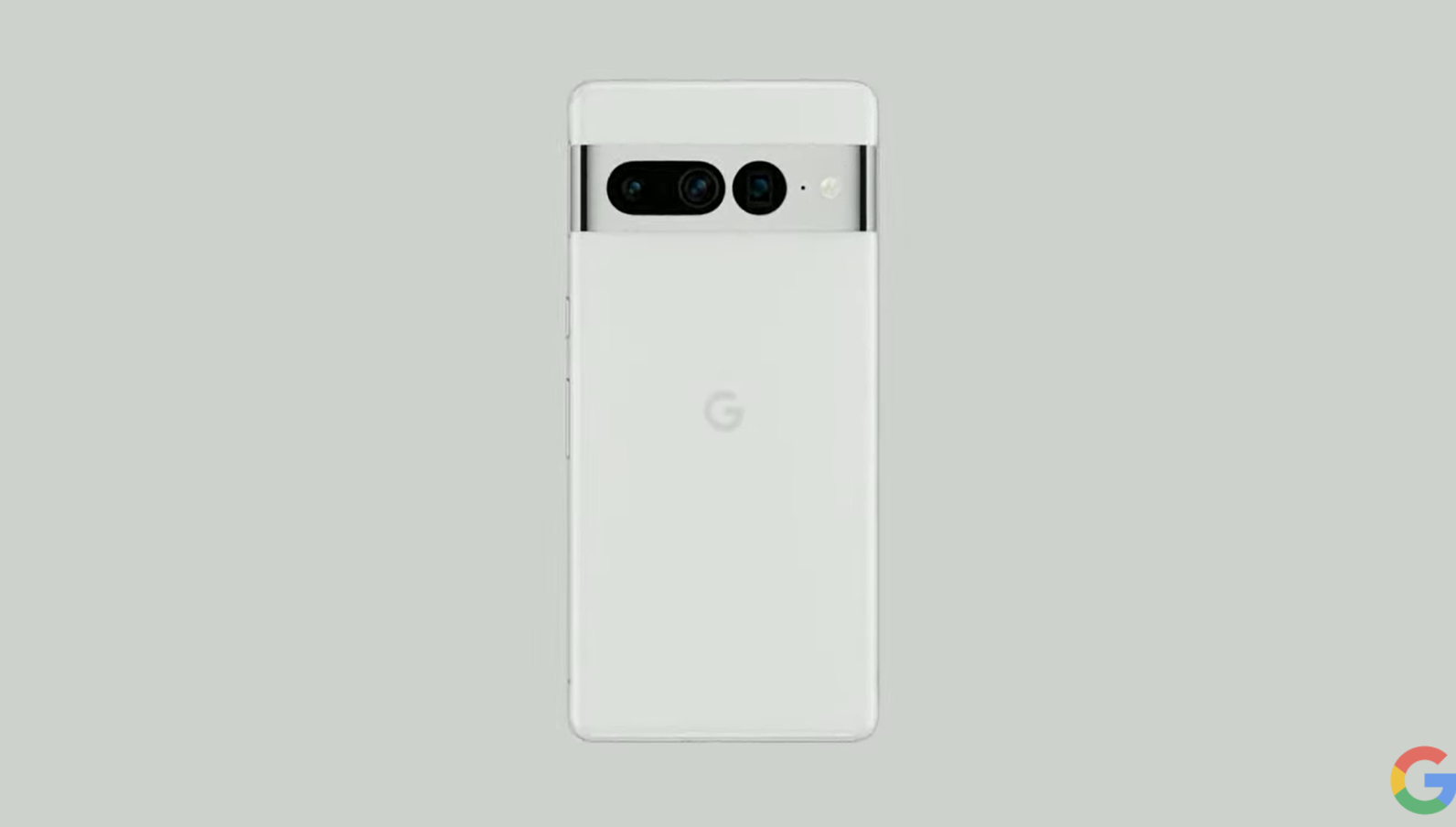
The main thing we know about the Google Pixel 7 series is the design - and it's not too different from the Pixel 6. Above, you see the Pro model, complete with three cameras in the camera bar - the standard device only has two.
According to Google, this bar is now one continuous piece that includes the frame of the phone, and all are made from recycled aluminum.
The phones will run the next version of Google's Tensor chipset, which the company has now confirmed is called the Tensor G2. In the same breath, Google revealed the colors these phones will be available in.
The Pixel 7 is coming in Obsidian, Snow and Lemongrass, while the Google Pixel 7 Pro will be available in a choice of Obsidian, Snow or Hazel. You can see how these colors look in the images below.
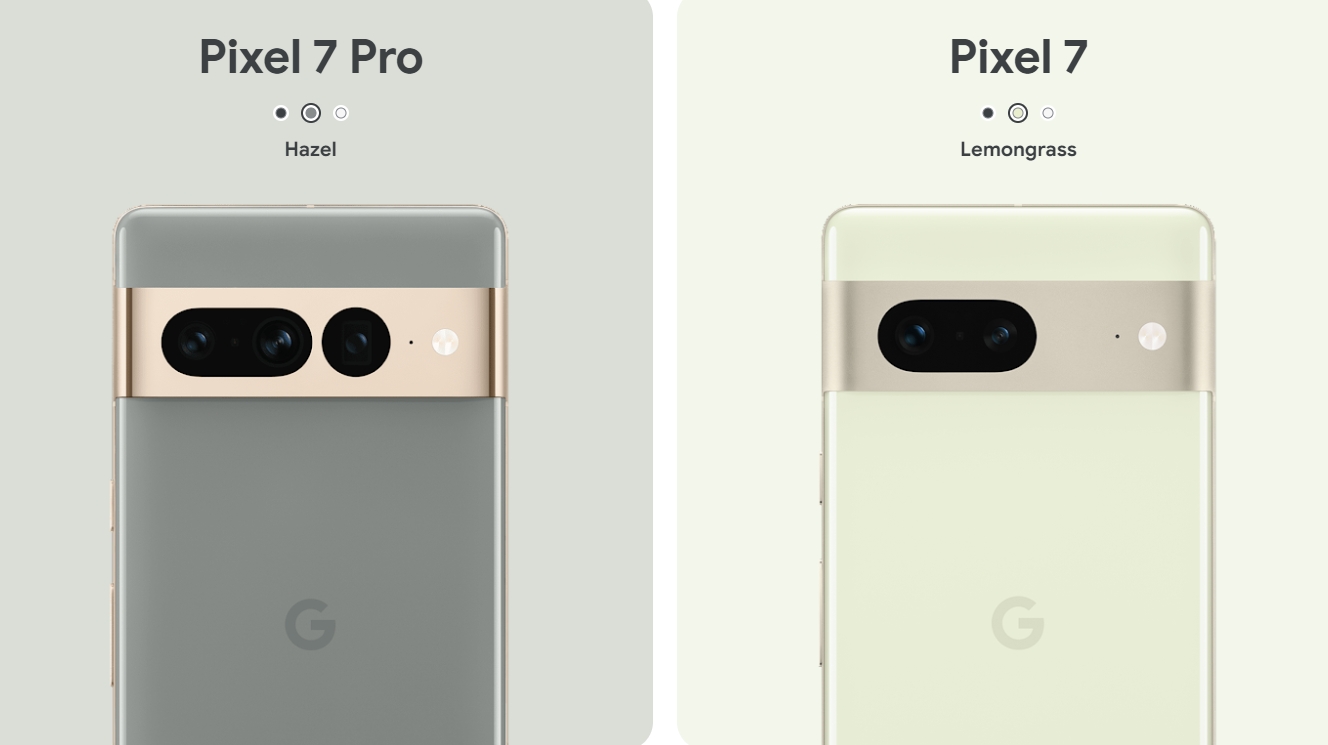
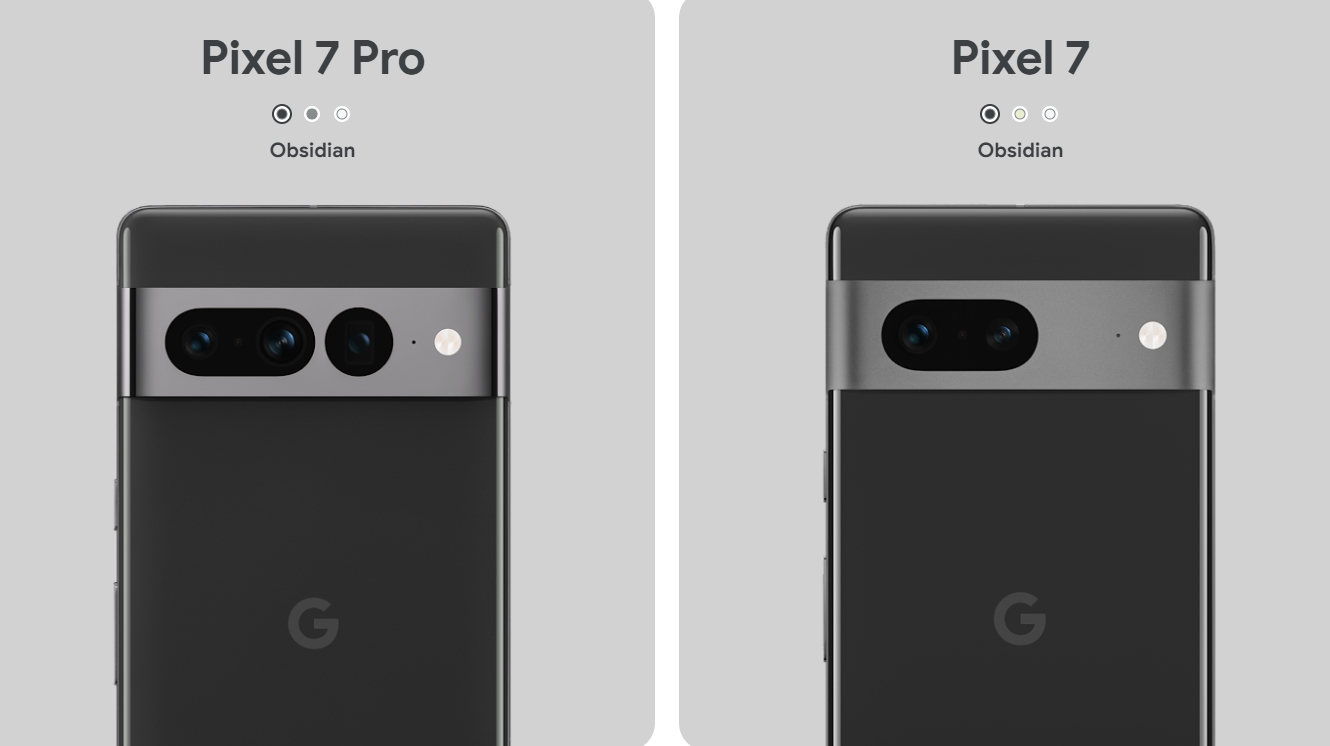
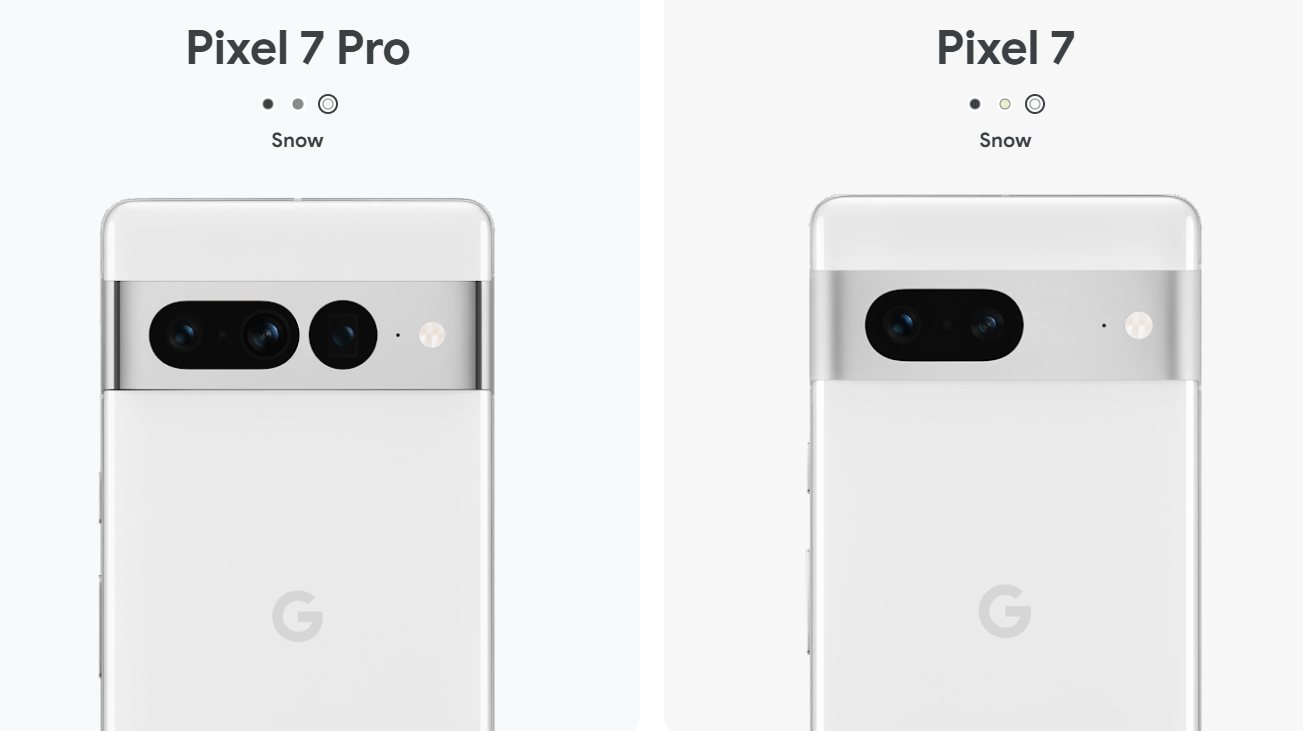
Google has taken the strange step of also highlighting these shades in potato chip flavors that it's marketing at Japanese customers, and that's not even the first time it's pulled such a move.
If you prefer videos to pictures, Google has you covered there too, with a design video of the Pixel 7, and one of the Pixel 7 Pro.
We also know the phones will come with Android 13 pre-installed - software which we know quite a bit about.
News and leaks
Just because the Pixel 7 and the Pixel 7 Pro are official doesn't mean that we know everything about them – there are still a few key details not yet in-frame, and that's where the rumor mill comes in.
There's been a steady stream of leaks since Google IO 2022, like the one that claiming the 2022 Pixel 7s use the same displays as the 2021 Pixels, down to the sizes, resolutions and refresh rates; something subsequent leaks have backed up. However, there's a chance the screen on the Pixel 7 Pro will be brighter than the one on its predecessor.
It sounds likely that the Pixel 7 phones will come with support for face unlock and dual eSIMs, while there's talk of the Pixel Watch and the Pixel Buds Pro as pre-order freebies (in some parts of the world at least).
We've also heard whisperings that the addition of an extra sensor on the Google Pixel 7 could open up the possibility of more cases and more functionality for the device – because it will know when there's a closed case on it.
If you want to get an early look at the phone, then an unofficial unboxing video of the Google Pixel 7 Pro has emerged online. It looks to be genuine, but it doesn't tell us much that we don't already know.
Even though Google has published official shots of the phone, we're going to keep the unofficial renders we saw first here, for the sake of posterity. As you can see, they turned out to be pretty accurate as well.
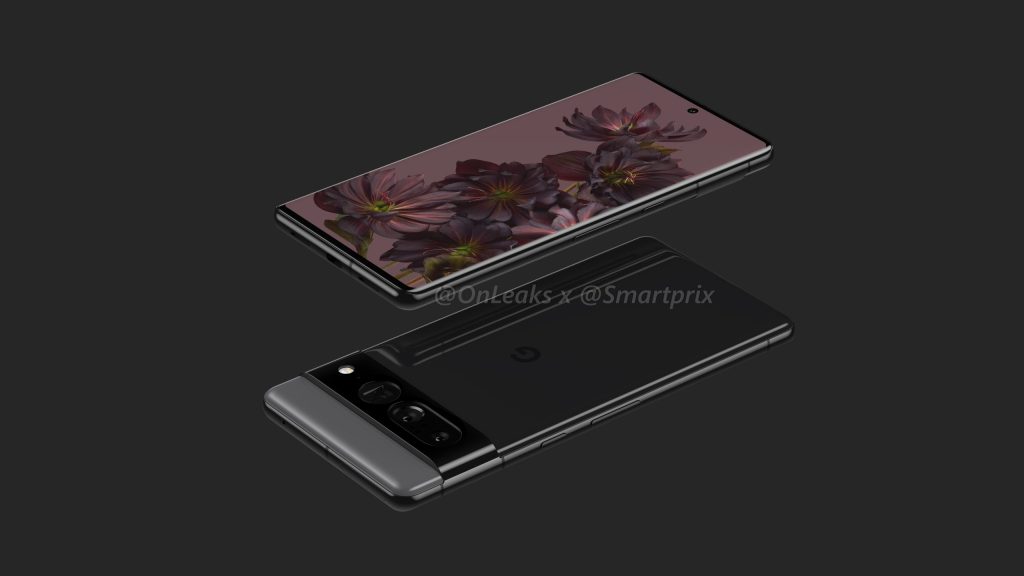
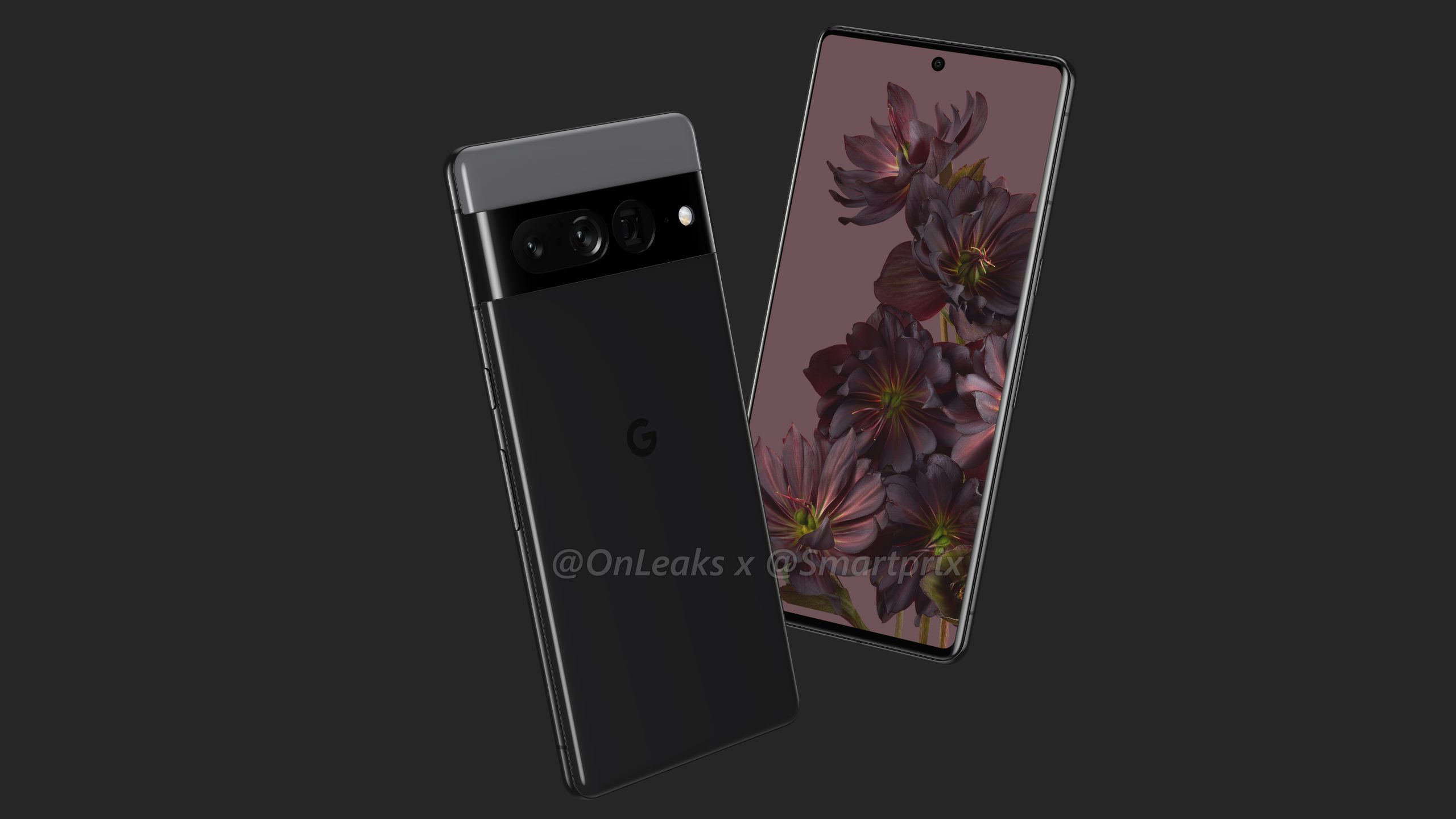
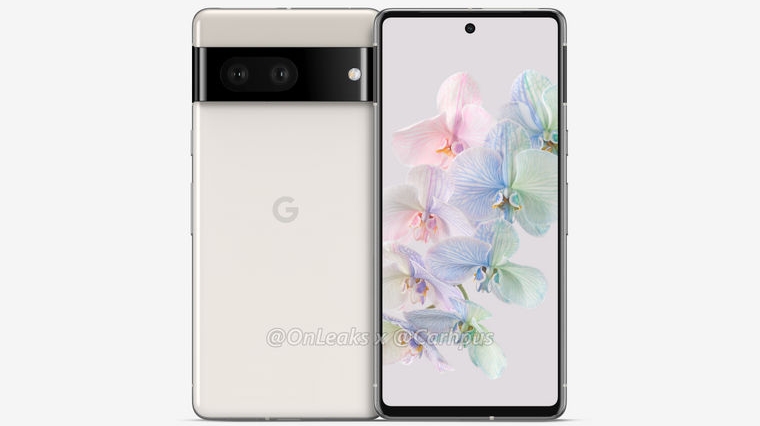
These renders also come with some details, including that the Pixel 7 is apparently 155.6 x 73.1 x 8.7mm, (rising to 11.44mm at the camera bump), while the Pixel 7 Pro is 163 x 76.6 x 8.7mm (or 11.2mm at the camera bump).
Their screen sizes could be similar to the Pixel 6 range, with the Pixel 7 said to have a 6.2-6.4-inch display, while the Pixel 7 Pro might have a 6.7 or 6.8-inch one. Cameras meanwhile could include a main, ultra-wide and telephoto on the Pixel 7 Pro, while the standard Pixel 7 might get a 50MP main, a 50MP ultra-wide, and an 8MP front-facing camera, along with a battery of around 5,000mAh.
Finally, there could be a choice of 128GB, 256GB or 512GB of storage in the standard Pixel 7, and color choices of black, coral, blue or white.
A full leaked specs list, meanwhile, suggests much the same, with these two phones looking to have near-identical specs to their predecessors, other than a new chipset. However, there look to be some camera improvements, with both models rumored to be getting a Movie Motion Blur mode, which might be like the iPhone's Cinematic Mode.
Additionally, this leak suggests the Pixel 7 Pro will get something called Macro Focus, along with 5x optical zoom – up from 4x on the Pixel 6 Pro – and 30x digital zoom, where its predecessor topped out at 20x.
Elsewhere, we've seen other leaked Pixel 7 Pro renders, which look similar to those above albeit in very different colors, as you can see below.
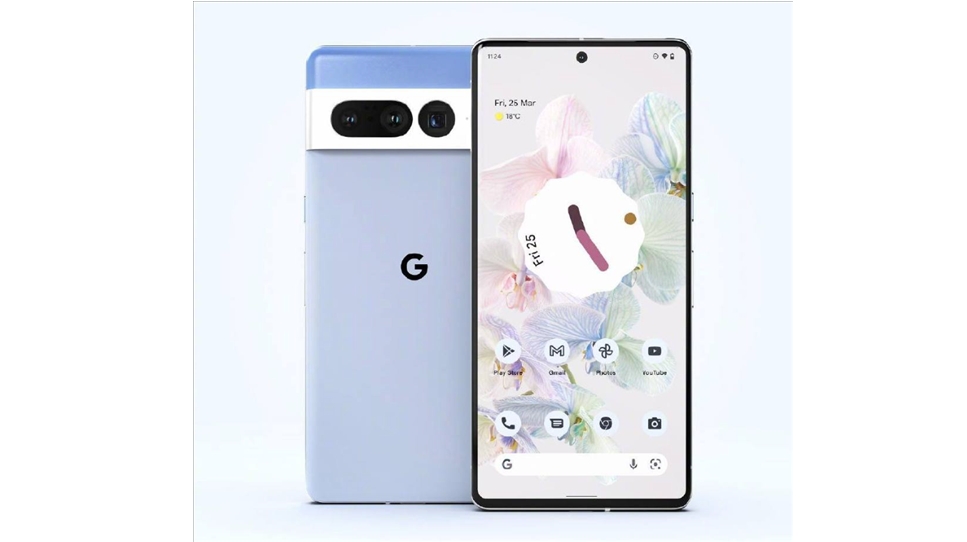

Reputable leaker Evan Blass has also shared renders of the Pixel 7 the Pixel 7 Pro, though these don't really show us anything that Google hasn't already.
Another source meanwhile suggests the screen sizes could be 6.3 inches and 6.7 inches for the Pixel 7 and Pixel 7 Pro respectively. The former would therefore be slightly smaller than the 6.4-inch Pixel 6.
We know that the Pixel 7 range will be powered by the second generation of the Google Tensor chipset, called the Tensor G2, but apparently, it won't be very different from the original Tensor.
Along those lines a benchmark for the Pixel 7 Pro suggests performance improvements of just around 10% from the new chipset.
Google also patented an under-display camera technology in August 2021, and some have speculated that it may mean its ready for the Pixel 7. That does mean it's likely this could be one of the next-gen phones to feature an "invisible" selfie camera.
Patents don't always get used though, so it may be that this technology is just an experiement within Google HQ. We won't know for sure until we see an under-display camera appear on a Pixel phone.
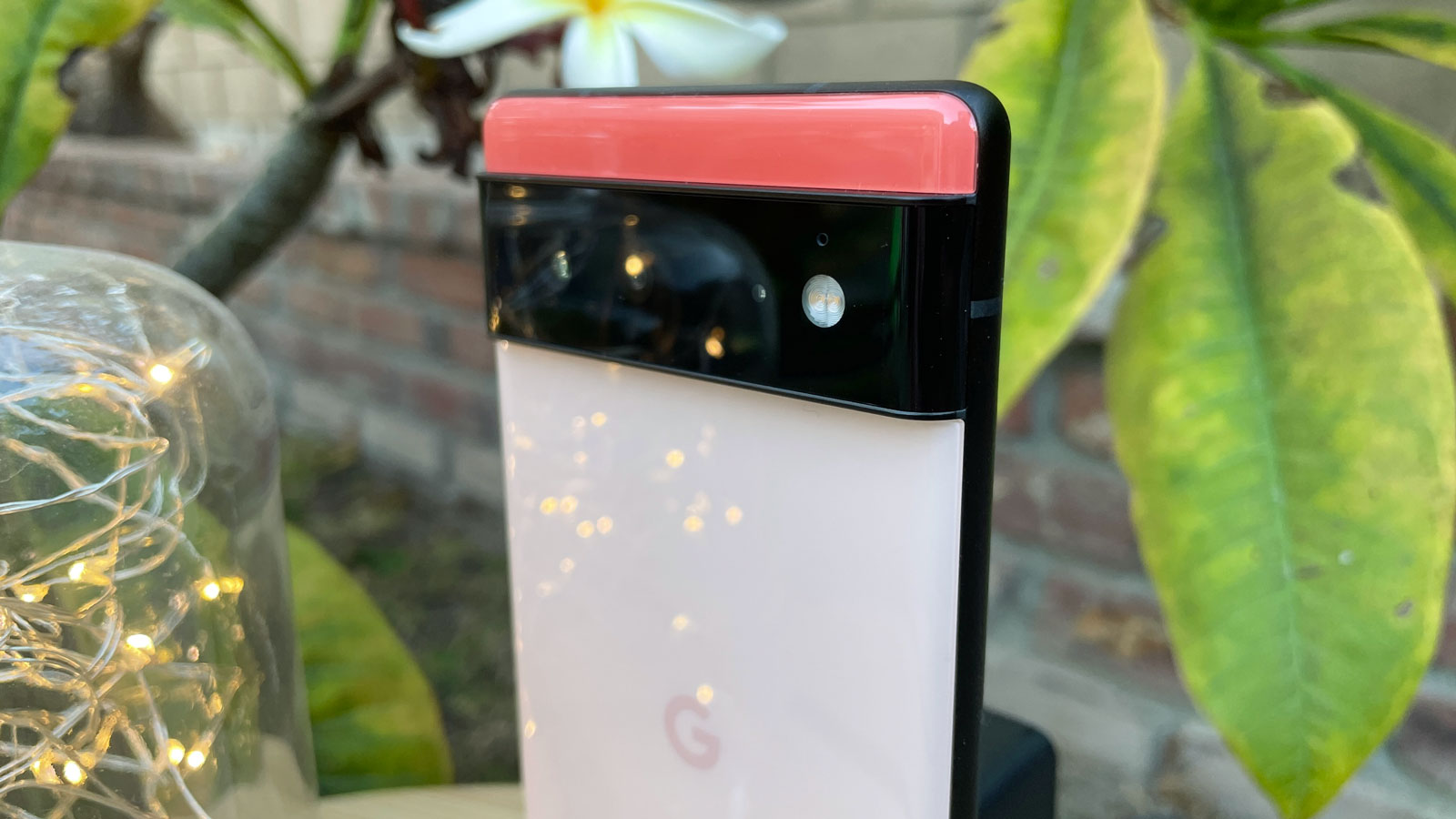
Before the Pixel 6 range even launched there was also evidence of the Pixel 7 found by XDA Developers in the Google Camera app. The upcoming phone appears to have the codename ‘pipit’.
The code in the app suggests that the Pixel 7 (or possibly the Pixel Fold) will have most of the same camera features as the Pixel 6, and that it will have an ultra-wide lens, but there’s no mention of a telephoto one. That said, the source notes that it’s too early to be sure this version of the Google Camera app actually lists Pixel 7 features, let alone that the list is complete.
Since then, a newer version of the Google Camera app has revealed that the Pixel 7 and Pixel 7 Pro might both support 4K video on the selfie camera - though that would only be an upgrade for the standard model. This change might mean a new sensor is used for the Pixel 7's selfie camera too.
Oh, and we can't forget the report which suggests the Pixel 7 and 7 Pro could have an even-higher-end sibling - maybe an Ultra or Pro Plus. Given Google's camera prowess, this could be a real Samsung Galaxy S22 Ultra or iPhone 13 Pro Max rival.
What we want to see
The Pixel 6 and Pixel 6 Pro are the most exciting Google phones in years, but they’re far from perfect, so we want to see the following changes for the Pixel 7 range.
1. Better battery life
In our reviews we listed the battery life as a negative point of both the Pixel 6 and the Pixel 6 Pro. It’s not terrible, but it’s distinctly average, so it could be a lot better.
For the Pixel 7 range then we want better battery life. Google is using a custom chipset that’s supposedly been designed from the ground up for these phones, and it makes the software that they run too, so we’d think it would be well positioned to make the Pixel range power efficient.
And if it can’t manage that, then just stick a bigger battery in. Either way, we don’t want to be worrying that we might not get to the end of the day without charging.
2. More power
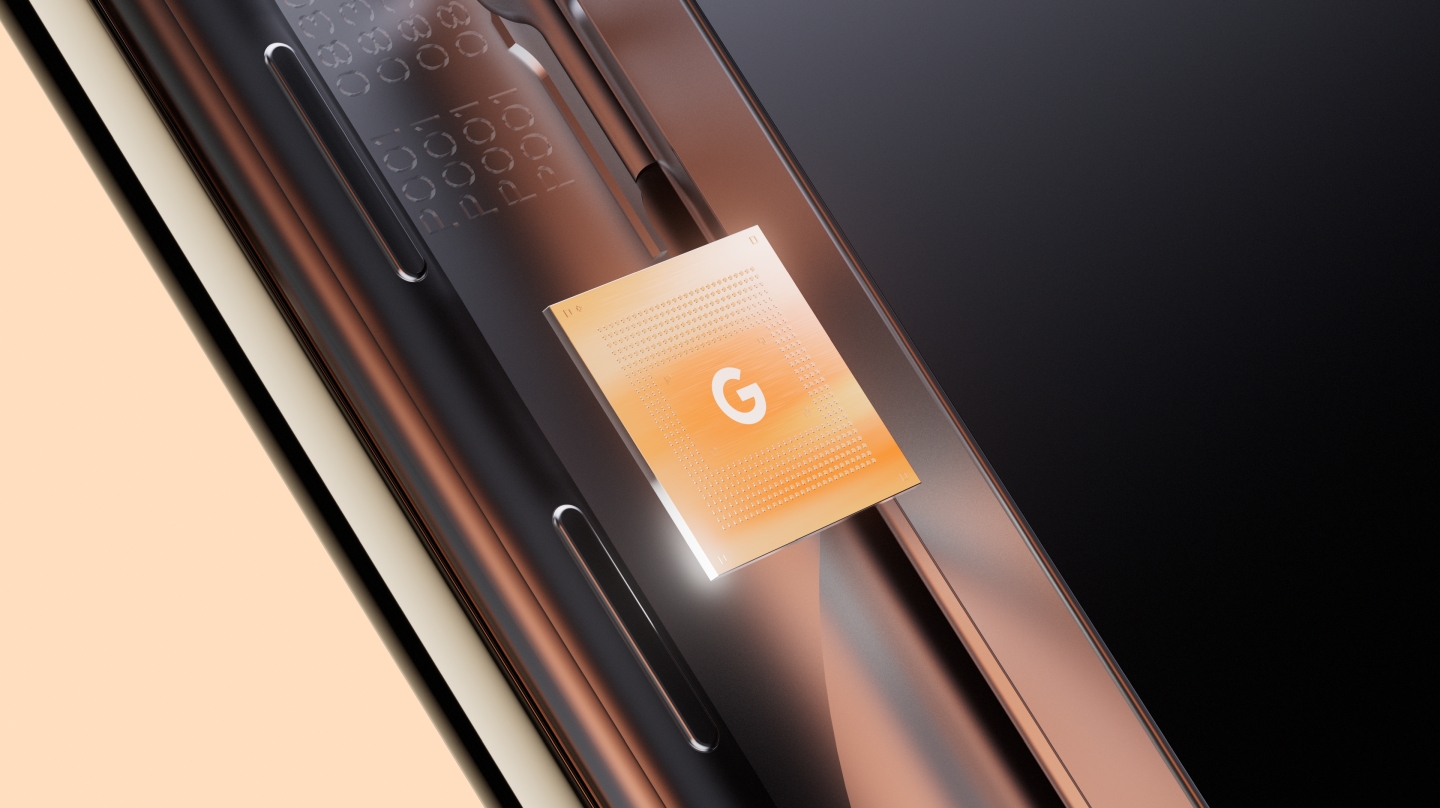
The Google Tensor chipset at the heart of the Pixel 6 is one of the most exciting aspects of the phone, as this is the first time Google has used a custom chipset rather than an off-the-shelf Qualcomm one.
Yet, while Google talked a big game about Tensor, its performance in benchmarks isn’t a match for the best rivals, like the Snapdragon 888 powering the OnePlus 9 and Samsung Galaxy S21.
Benchmarks aren’t everything of course, but we’d still like the Google Tensor 2 to exhibit more raw power, so it can directly compete with the best rival silicon.
3. Longer support
Prior to the launch of the Pixel 6 range it was rumored that Google would offer five years of Android updates for these phones, but in practice it only promised five years of security patches, along with three years of Android updates.
While that’s at least as good as Android rivals, it’s no match for iPhones, which sometimes get even more than five years of operating system updates.
Some other companies can point to the chipsets in their phones as holding them back, as the chipset maker also ideally needs to support updates for an extended period, but with Google making its own chipset now, it doesn’t have that excuse. In fact, it doesn’t have any excuse, so we’ll be very disappointed if the Pixel 7 isn’t supported for longer.
4. A better fingerprint scanner
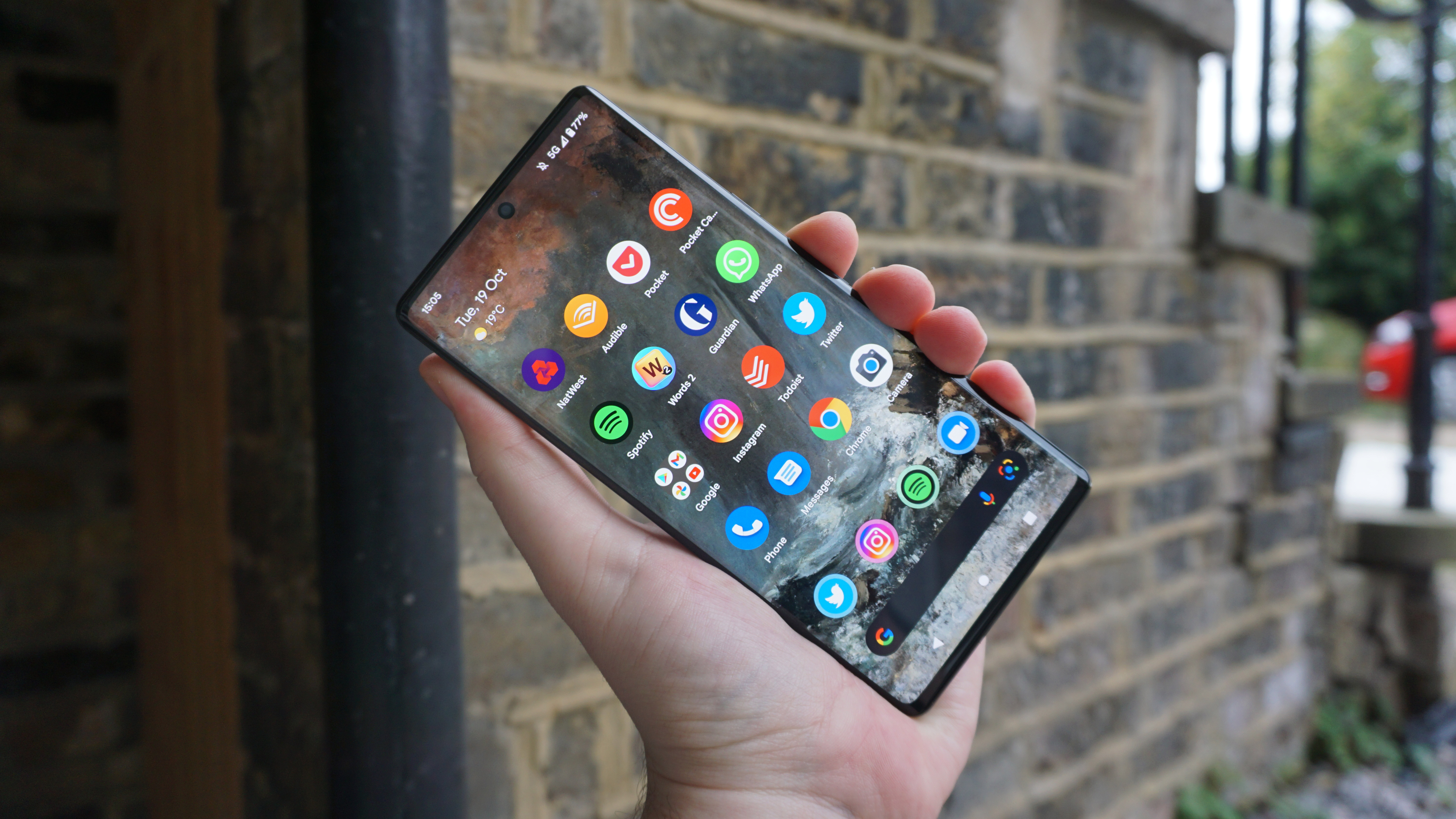
The Pixel 6 range are the first Google phones to have an under-display fingerprint scanner, but we noted in our Pixel 6 Pro review that the implementation is far from perfect.
We found that it would sometimes take several attempts to unlock, presumably because it’s pickier than some phones about exactly where you place your finger. So for the Pixel 7 we want this smoothed out, so that the fingerprint scanner reliably and rapidly works.
5. A longer, variable zoom
The Google Pixel 6 doesn’t have a telephoto camera at all, and while the Pixel 6 Pro does, it only zooms to 4x.
For the Pixel 7 (or at least the Pixel 7 Pro), we want to see the zoom extended to 10x, like on the Samsung Galaxy S21 Ultra. But we don’t want just 10x zoom – we want it also to optically zoom to 2x or 3x, or ideally to even be able to optically zoom at every level up to 10x, so you have ultimate zooming flexibility.
- Check out all the best Android apps


from TechRadar - All the latest technology news https://ift.tt/BFJf01n
Aucun commentaire: